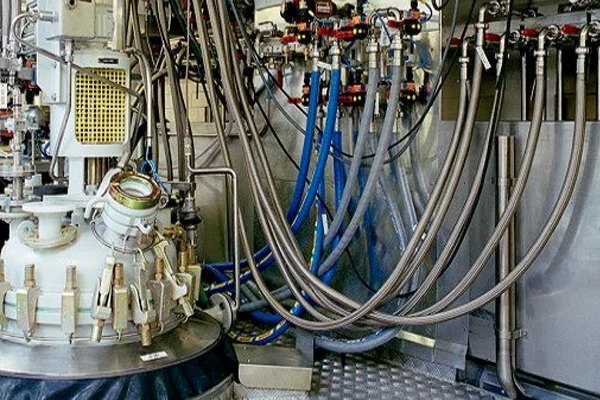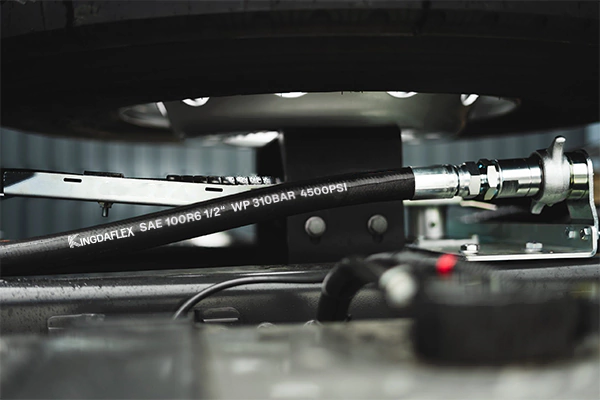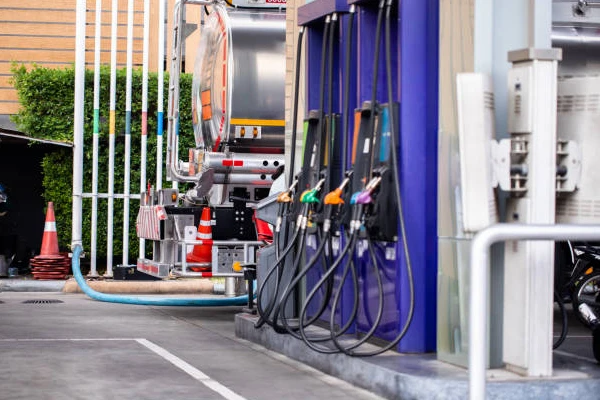In the industry of fluid power, the choice of a hydraulic hose is critical for system performance and safety. While rubber hoses have long been the standard, thermoplastic hydraulic hoses have emerged as a superior alternative for many applications. They are engineered from a unique combination of synthetic materials, offering distinct advantages over traditional designs.
This guide will demystify the thermoplastic hydraulic hose, exploring its core components and why it is a preferred choice in demanding industries. We’ll cover everything from its lightweight construction and remarkable flexibility to its exceptional resistance to abrasion and chemicals.
What Is Thermoplastic Hydraulic Hose?
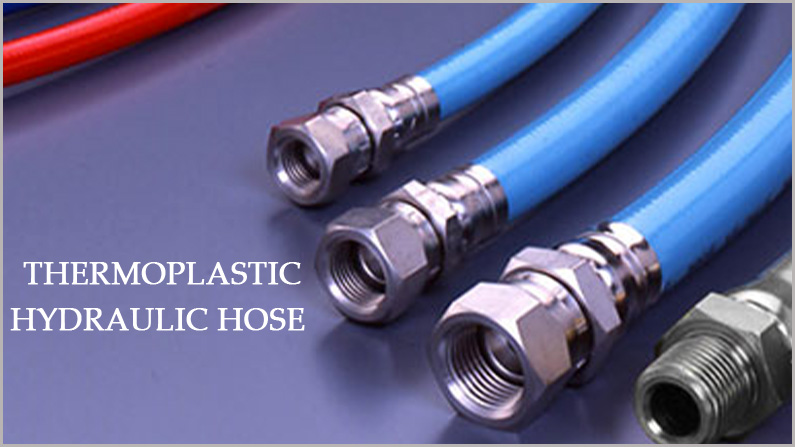
A thermoplastic hydraulic hose is a specialized, lightweight, and flexible hose used in hydraulic systems. Unlike traditional rubber hoses that often use steel wire for reinforcement, thermoplastic hoses are constructed from a synthetic polymer inner tube and outer cover, with a reinforcement layer of braided synthetic fibers like polyester or aramid.
This design provides a high pressure rating while allowing for a tighter bend radius and a smaller outer diameter. Thermoplastic hoses are also highly resistant to abrasion, ozone, and many chemicals, and they can be manufactured to be non-conductive, making them a safe choice for applications where electrical hazards are a concern.
What Is Thermoplastic Hydraulic Hose Made of?
Thermoplastic hoses are made from thermoplastic materials such as polyurethane, polyethylene, nylon, and PVC. These materials are melted and then molded into a hose using a variety of manufacturing techniques. The resulting hose is lightweight, flexible, and durable, making it ideal for a range of applications.

Thermoplastic Hydraulic Hose Structure
- Inner Tube: The innermost layer is a seamless tube made from a thermoplastic material like nylon, polyester, or polyurethane. This material is chosen for its compatibility with various hydraulic fluids and its resistance to chemical degradation.
- Reinforcement: Instead of steel wire, this layer uses one or more braids of high-tensile synthetic fibers, such as polyester or aramid. This reinforcement provides the hose with its strength and pressure rating while keeping it lightweight and often non-conductive.
- Outer Cover: The outermost protective layer is made of a durable thermoplastic material, commonly polyurethane. This cover is highly resistant to abrasion, chemicals, and environmental factors like UV radiation and ozone, protecting the inner layers and extending the hose’s lifespan.
The thermoplastic hydraulic hose is a well-designed hydraulic hose, which is much more flexible, durable, and abrasion-resistant.
Unlike traditional rubber hoses, thermoplastic hoses are made from a material that can be melted and re-formed, which allows for greater design flexibility and a lighter, more durable finished product.
The hydraulic hoses thermoplastic can be widely applied in the medium-pressure to high-pressure hydraulic systems. And thermoplastic hoses are commonly used for mobile and industrial equipment, which need a high-pressure hydraulic working system.
Compared with the regular hydraulic hose, the thermoplastic hydraulic hose is much thinner, with the same inside diameter, so the thermoplastic hydraulic hose has much less wall thickness.
Inner Tube: Oil resistance thermoplastic elastomer;
Reinforcement: Two polyester braids
Outer Cover: Thermoplastic elastomer with high ozone and abrasion resistance.
Temperature: -40℃ ~ +100℃
Thermoplastic Hydraulic Hose Types
Thermoplastic hoses come in a variety of standard types, each designed for specific applications and pressure requirements. These hoses, often lighter and more flexible than their rubber counterparts, are a modern solution for fluid power systems. They offer superior resistance to a range of environmental factors.
SAE 100R7 (DIN EN 855)
This is a standard medium-pressure thermoplastic hose. It is well-suited for a variety of general hydraulic applications, providing excellent flexibility and abrasion resistance. Its design makes it a versatile choice for many industrial and mobile equipment needs.
SAE 100R7 (DIN EN 855) Non-Conductive
This version of the 100R7 hose is specifically designed for applications where electrical safety is a concern. The non-conductive cover provides electrical insulation, making it ideal for use in aerial lifts and utility service equipment.
SAE 100R7 (DIN EN 855) Twin Line
This variety consists of two separate 100R7 hoses bonded together. It is designed for applications that require both a pressure and return line in a single, organized unit, simplifying installation and reducing the risk of hose entanglement.
SAE 100R7 (DIN EN 855) Twin Line Non-Conductive
Combining the benefits of the non-conductive and twin-line designs, this hose provides a dual-line solution with electrical insulation. It is a preferred choice for applications like hydraulic tools and lifts where both organized lines and electrical safety are critical.
SAE 100R18
This is a thermoplastic hose designed for very high-pressure applications. It offers a more compact and lightweight alternative to traditional rubber hoses, providing a tight bend radius and reliable performance in demanding environments where space and weight are concerns.
SAE 100R8 (DIN EN 855)
This is a very high-pressure thermoplastic hose, reinforced with two braids of synthetic fiber. It is engineered for applications that require a robust yet lightweight hose, offering excellent durability and resistance to chemicals in demanding fluid power systems.
SAE 100R8 (DIN EN 855) Non-Conductive
Similar to the standard 100R8, this hose features a non-conductive cover, ensuring electrical safety in high-pressure applications. It is commonly used in equipment that operates near power lines or other electrical sources.
SAE 100R8 (DIN EN 855) Twin Line
This type bonds two 100R8 hoses together, providing a very high-pressure dual-line solution. It is ideal for systems that need both pressure and return lines to be managed together, offering both strength and organization.
Thermoplastic Hydraulic Hose Colors
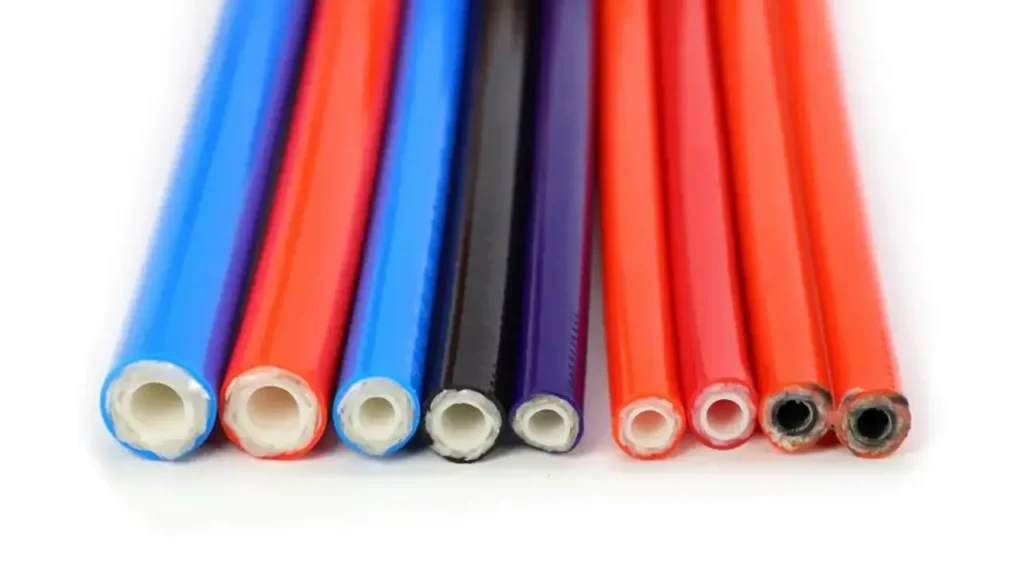
The color of a thermoplastic hydraulic hose is more than just a matter of aesthetics; it often serves a critical purpose for safety, identification, and branding. While most hydraulic hoses are black, manufacturers can add color to the outer cover during the extrusion process. This allows for a clear, visual cue that helps distinguish between different hoses in a complex system.
In many cases, a specific color is used to denote a particular property or application, which can be crucial for preventing accidents and ensuring correct installation.
Common Thermoplastic Hose Colors and Their Meanings
- Orange: This is the most common color used for non-conductive hydraulic hoses. The bright, high-visibility orange is a clear safety signal, indicating to operators that the hose is engineered to be an electrical insulator and is suitable for use in proximity to live power lines.
- Black: This is the standard, general-purpose color for both rubber and thermoplastic hoses. Unless specified otherwise with a label or layline, a black hose does not carry a specific safety designation.
- Other Colors (e.g., Red, Blue, Yellow): While not universally standardized, other colors can be used by manufacturers for specific purposes. This can include designating a particular pressure rating, identifying a hose for a specific type of fluid (e.g., fuel vs. water), or to match a customer’s branding.
What is the Difference Between Thermoplastic Hose and Rubber Hose?
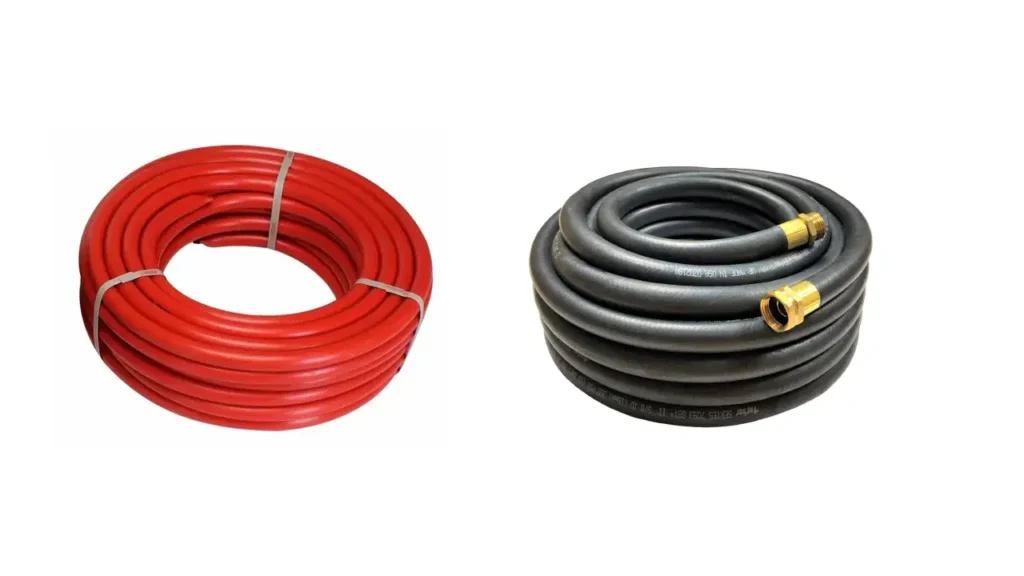
Thermoplastic and rubber hoses differ in their material composition, leading to distinct advantages and disadvantages. Thermoplastic hoses are made from synthetic polymers like polyurethane, polyester, or nylon, which are lightweight and offer excellent resistance to chemicals, abrasion, and UV radiation. They also have a tighter bend radius and a significantly longer shelf life.
In contrast, rubber hoses are composed of natural or synthetic rubber compounds and are reinforced with steel wire or textile braids. This construction makes them heavier and less flexible, but also provides superior durability, shock absorption, and temperature resistance, particularly in high-pressure applications.
Here are the key differences between thermoplastic and rubber hoses:
- Material: Thermoplastic hoses use polymers, while rubber hoses use natural or synthetic rubber.
- Weight: Thermoplastic hoses are considerably lighter, making them easier to handle and install.
- Flexibility: Thermoplastic hoses have a tighter bend radius, allowing for easier routing in tight spaces.
- Durability: Rubber hoses are generally more robust and better at absorbing shock, while thermoplastic hoses excel in chemical and abrasion resistance.
- Shelf Life: Thermoplastic hoses have an unlimited shelf life, whereas rubber hoses can degrade over time due to UV and ozone exposure.
Here is the table showing you the differences between thermoplastic hoses and rubber hose in the following:
| Feature | Thermoplastic Hose | Rubber Hose |
| Material | Thermoplastic polymers (e.g., polyurethane, nylon) | Natural or synthetic rubber |
| Weight | Lightweight | Heavier |
| Flexibility | Highly flexible, tighter bend radius | Less flexible, larger bend radius |
| Abrasion Resistance | Excellent | Moderate |
| Chemical Resistance | Excellent | Limited |
| Shock Absorption | Moderate | Excellent |
| Shelf Life | Unlimited | Limited (can degrade) |
| Reinforcement | Synthetic fiber braids or steel wire | Steel wire or textile braids |
SAE 100R7 vs 100R8 Thermoplastic Hose

While both are types of thermoplastic hydraulic hoses, the primary difference between SAE 100R7 and 100R8 lies in their pressure rating and the reinforcement used to achieve it. The SAE 100R7 standard is designed for medium-pressure applications, making it a flexible and cost-effective choice.
In contrast, the SAE 100R8 standard is engineered for high-pressure systems, utilizing a more robust reinforcement to handle significantly higher operating pressures.
Key Differences between 100R7 and 100R8 hydraulic hoses in the follwing:
- Pressure Rating: 100R7 is designed for medium-pressure applications, similar to a 100R1 rubber hose. 100R8 is a high-pressure hose, comparable in performance to a 100R2 rubber hose.
- Reinforcement: 100R7 typically uses one or two braids of synthetic fiber reinforcement. The 100R8 uses a more robust, often multiple-braid, synthetic fiber reinforcement (like aramid) for increased strength.
- Flexibility and Size: The 100R7’s less-dense reinforcement gives it superior flexibility and a smaller outer diameter. The 100R8, due to its heavier reinforcement, is slightly stiffer but can handle more demanding applications.
- Applications: 100R7 is ideal for medium-duty equipment like aerial lifts and lubrication lines. 100R8 is necessary for high-pressure tools and machinery found in heavy construction, mining, and other demanding industries.
When Should You Use Thermoplastic Hose?
You should use a thermoplastic hose when the application demands a solution that is lighter, more flexible, and more resistant to specific environmental factors than a traditional rubber hose. They are the ideal choice in scenarios where weight is a concern, such as on mobile equipment, or in tight spaces where their smaller bend radius is a key advantage.
Thermoplastic hoses should be selected when the system requires a non-conductive hose for electrical safety, or when the hydraulic fluid is not compatible with rubber.
Best Use Cases
- High-Pressure Non-Conductive Applications: For aerial lifts, utility vehicles, and hydraulic rescue tools where the hose must act as an electrical insulator to protect operators.
- Tight Routing and Limited Space: Their smaller outer diameter and superior flexibility make them perfect for compact machinery, robots, and automated systems.
- Harsh Environments: The durable outer cover provides exceptional resistance to abrasion, chemicals, UV radiation, and ozone, extending the hose’s lifespan in corrosive or outdoor settings.
- Weight-Sensitive Equipment: Ideal for applications where reducing the overall weight of the hydraulic system is a priority, such as on aircraft or other mobile equipment.
- High-Purity and Fluid Compatibility: The non-porous thermoplastic inner tube prevents fluid permeation and contamination, making them suitable for high-purity or sensitive fluid transfer applications.
The Benefits of Thermoplastic Hydraulic Hose
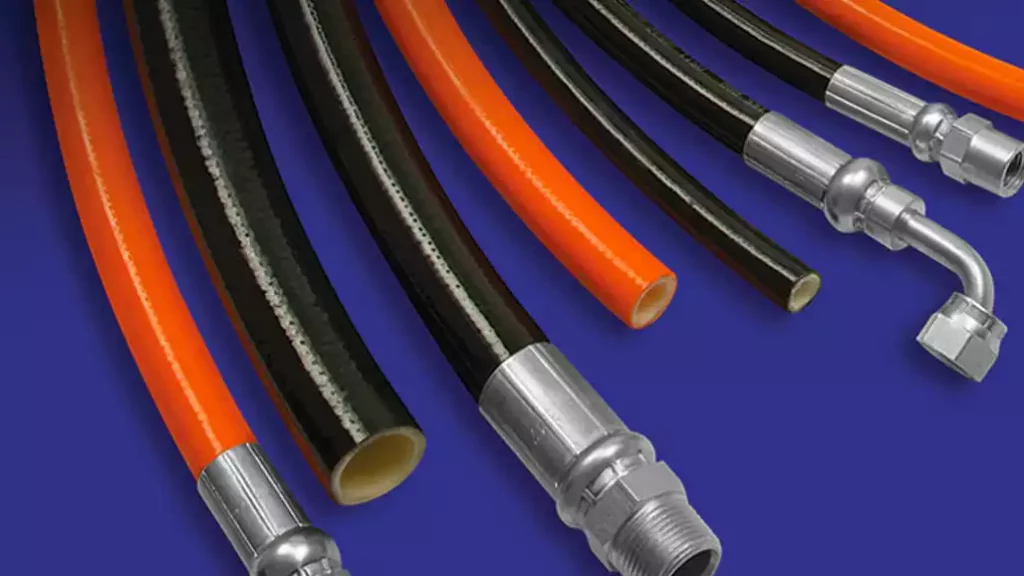
There are several benefits of using thermoplastic hydraulic hoses over traditional rubber hoses:
Abrasion Resistance
Hoses are frequently subjected to various environmental stresses such as bending, scuffing, and harsh conditions. These hydraulic hoses can result in the steel braid of a rubber hose being exposed, leading to early failure. In contrast, thermoplastic hoses are engineered to be highly resistant to abrasion and do not succumb to failure like rubber hoses. This is due to the braid being integrated into the hydraulic hose material, providing superior abrasion resistance.
UV and Ozone Resistance
In addition to thermoplastic hydraulic hose abrasion resistance, thermoplastic hydraulic hoses can also offer excellent resistance to ultraviolet (UV) light and ozone. This makes them suitable for use in outdoor applications where the hose may be exposed to direct sunlight and other environmental elements.
UV light can cause rubber hoses to degrade and become brittle over time, while ozone can cause cracks and holes to develop in the hose. Both of these can lead to hose failure and leaks, which can cause significant downtime and repair costs.
Thermoplastic hoses, on the other hand, are designed to be highly resistant to UV light and ozone, which helps to extend the life of the hose and minimize the risk of failure. This makes them a reliable and cost-effective option for outdoor hydraulic applications, such as those in agriculture or construction.
Lower Cost Than Rubber Hydraulic Hose
In some cases, thermoplastic hydraulic hoses can be more cost-effective than traditional rubber hoses. This is due to several factors, including:
- Material costs: Thermoplastic materials used in hydraulic hoses can be less expensive than the materials used for rubber hoses.
- Production costs: The production process for thermoplastic hoses is often more efficient and streamlined than that rubber hoses, which can help to reduce costs.
- Lower weight: The lighter weight of thermoplastic hoses can help to reduce shipping costs and make them easier to handle, which can help to reduce overall costs.
- Increased durability: The increased durability of thermoplastic hoses compared to rubber hoses means they may last longer and need fewer replacements, which can help to reduce costs over time.
Lighter Compared with Hydraulic Hose
Another advantage of using thermoplastic hoses is their lightweight construction. These hoses are typically much lighter than other types of hoses, which makes them easier to handle and transport. This can be especially important in applications where the hose needs to be moved frequently or where weight is a concern.
The lighter weight of thermoplastic hydraulic hoses compared to rubber hoses is due, in part, to the type of reinforcement used. Traditional rubber hoses are often reinforced with steel braiding, which adds strength and durability but can also add weight to the hose.
Thermoplastic hoses, on the other hand, use a variety of reinforcement methods that are lighter and more flexible, including braiding made from high-density polyethylene (HDPE) or aramid fibers. This lighter reinforcement allows the hose to maintain its strength and stability while reducing its overall weight.
Thermoplastic Hydraulic Hose Applications
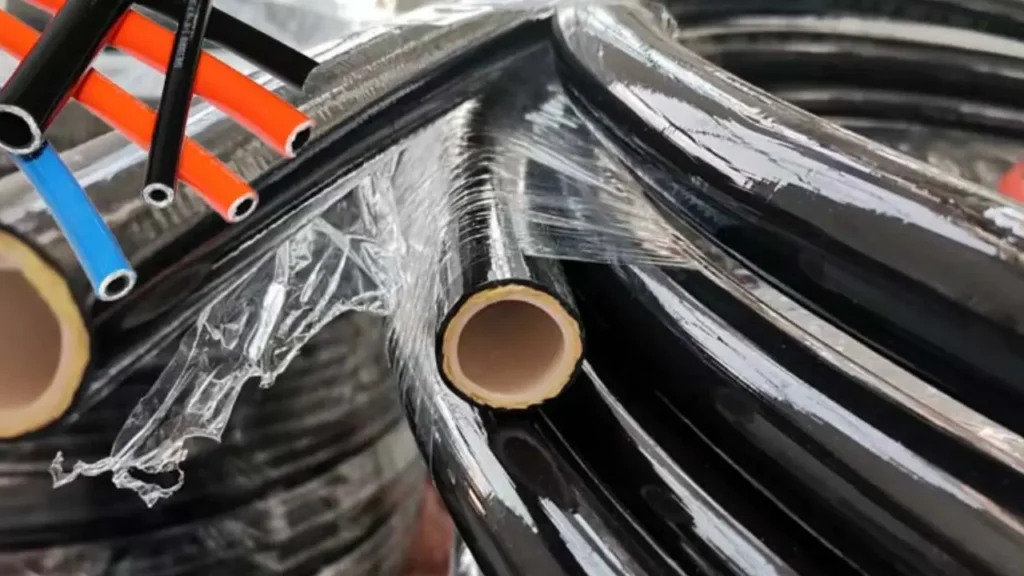
Thermoplastic hydraulic hoses are a type of hose used in hydraulic systems to transmit fluid power. They are made from thermoplastic materials such as nylon, polyurethane, and PVC, which offer several advantages over traditional rubber hoses. Some common applications of thermoplastic hydraulic hoses include:
- High-pressure systems: Thermoplastic hoses can withstand higher pressures than rubber hoses, making them ideal for high-pressure hydraulic systems such as those used in construction machinery and mining equipment.
- Chemical resistance: Thermoplastic materials are resistant to a wide range of chemicals, making them suitable for use in applications where the hydraulic fluid may be corrosive or abrasive.
- Low-temperature applications: Thermoplastic hoses remain flexible at low temperatures, making them ideal for use in cold environments such as snowplows and freezer rooms.
- Compact and lightweight: Thermoplastic hoses are lighter and more flexible than rubber hoses, making them easier to handle and install in tight spaces.
- Food and beverage industry: Thermoplastic hydraulic hoses are FDA approved, making them suitable for use in the food and beverage industry where they can be used in food processing and packaging equipment.
Thermoplastic hydraulic hoses offer a range of benefits over traditional rubber hoses, making them a popular choice in a variety of applications.
Conclusion
In conclusion, the thermoplastic hydraulic hose is a modern, dependable solution that offers significant advantages over its rubber counterparts. Its superior chemical resistance, lighter weight, and excellent bend radius make it a perfect fit for a wide range of applications. By choosing this advanced technology, you can enhance the efficiency and longevity of your hydraulic systems, while also ensuring greater safety.
The versatility and durability of thermoplastic hoses make them an invaluable asset for many industries, including construction, manufacturing, and agriculture. Their ability to withstand harsh conditions and perform consistently under pressure is a testament to their innovative design and construction. This technology is a smart investment for optimizing your operations and minimizing downtime.
For all your thermoplastic hydraulic hose needs, remember that sourcing from a trusted manufacturer is key. We invite you to explore our comprehensive range of dependable products. You can get wholesale thermoplastic hydraulic hoses from Kingdaflex, ensuring you receive the best in performance, durability, and value for your business.




